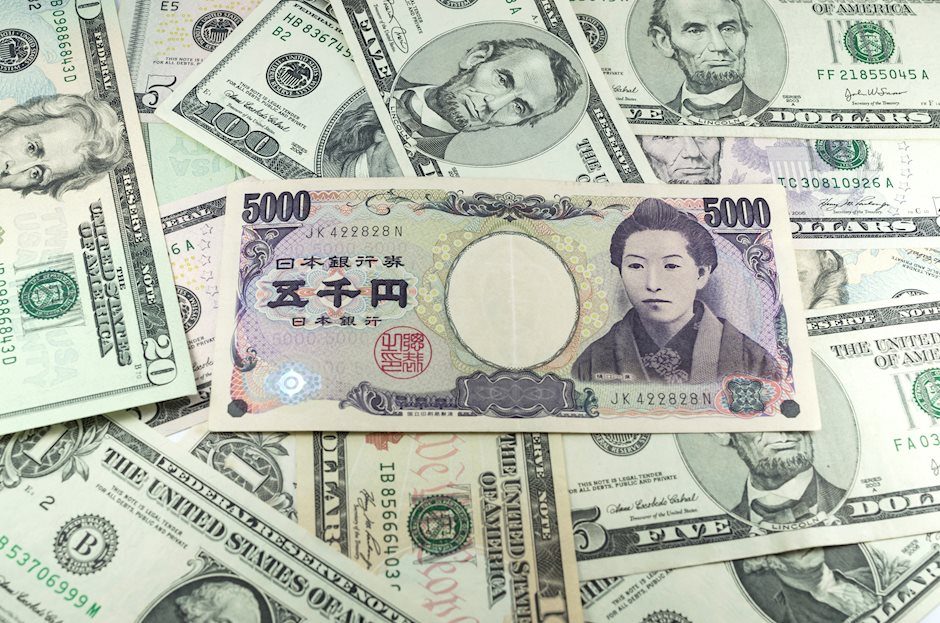Japanese Yen drifts lower amid fading hopes for more BoJ rate hikes, ahead of FOMC minutes
- The Japanese Yen attracts some sellers amid uncertainty over additional BoJ rate hikes.
- Hopes for a possible Hezbollah-Israel ceasefire further undermine the safe-haven JPY.
- Intervention fears cap USD/JPY amid subdued USD demand ahead of FOMC minutes.

The Japanese Yen (JPY) drifts lower against its American counterpart on Wednesday and moves back closer to its lowest level since August 16 touched earlier this week. Data published on Tuesday showed that Japan's real wages fell in August after two months of gains in wages, while household spending also declined, raising doubts about the strength of private consumption and a sustained economic recovery. This comes on top of blunt comments on monetary policy by Japan's new Japanese Prime Minister and fuels uncertainty over the Bank of Japan's (BoJ) plans for additional rate hikes, which, in turn, is seen weighing on the JPY.
Furthermore, news of a possible Hezbollah-Israel ceasefire undermined demand for the safe-haven JPY. The US Dollar (USD), on the other hand, approaches a seven-week high touched last Friday on the back of reduced bets for a more aggressive policy easing by the Federal Reserve (Fed). This, in turn, lifts the USD/JPY pair beyond the mid-148.00s heading into the European session. It, however, remains to be seen if bulls can capitalize on the move amid fears that Japanese authorities will intervene to support the domestic currency and ahead of the release of the FOMC meeting minutes later during the North American session.
Daily Digest Market Movers: Japanese Yen approaches weekly low as traders scale back bets for more BoJ rate hikes
- According to the government data released on Tuesday, real wages in Japan – the world's fourth-largest economy – fell 0.6% and household spending declined by 1.9% in August from the same month a year earlier.
- This, along with comments from Japan's Prime Minister Shigeru Ishiba, saying that the country is not in an environment for more rate increases, could derail the Bank of Japan's rate-hike plans in the coming months.
- Israeli forces made new incursions in the south of Lebanon on Tuesday, raising the risk of a full-blown war in the Middle East, though the fears eased after Iran-backed Hezbollah left the door open for a negotiated ceasefire.
- Japan's Finance Minister Katsunobu Kato said earlier this week that the government would monitor how rapid currency moves could potentially impact the economy and would take action if necessary.
- The Reuters Tankan monthly poll showed on Wednesday that Japanese manufacturers turned more confident about business conditions in October and the sentiment index rose from 4 in September to 7 this month.
- The survey, however, indicated that Japanese manufacturers remained wary about the pace of China's economic recovery and the service sector's mood eased, reflecting patchy economic conditions in Japan.
- The US Dollar extends its consolidative price move near a seven-week top amid diminishing odds for a more aggressive policy easing by the Federal Reserve and does little to influence the USD/JPY pair.
- Traders now look forward to the release of September FOMC meeting minutes for some impetus, ahead of the US Consumer Price Index and the Producer Price Index on Thursday and Friday, respectively.
Technical Outlook: USD/JPY needs to find acceptance above the 149.00 mark for bulls to seize near-term control
From a technical perspective, the emergence of some dip-buying on Tuesday comes on the back of last week's move beyond the 50-day Simple Moving Average (SMA) for the first time since mid-July and favors bullish traders. Moreover, spot prices now seem to have found acceptance above the 148.00 mark, or the 38.2% Fibonacci retracement level of the July-September downfall. This, along with the fact that oscillators on the daily chart have been gaining positive traction, suggests that the path of least resistance for the USD/JPY pair is to the upside. Any further move up, however, might confront some resistance near the 148.70 zone ahead of the 149.00 round figure. Some follow-through buying beyond the weekly top, around the 149.10-149.15 region, will reaffirm the positive outlook and allow the pair to reclaim the 150.00 psychological mark.
On the flip side, the overnight swing low, around the 147.35-147.30 region, now seems to protect the immediate downside ahead of the 147.00 mark. A convincing break below the latter could drag the USD/JPY pair to the 146.45 intermediate support en route to the 146.00-145.90 region and the 145.00 confluence support. The latter comprises the 50-day SMA and the 23.6% Fibo. level, which if broken decisively will suggest that the recent recovery from the vicinity of mid-139.00s, or a 14-month low has run its course and shift the near-term bias in favor of bearish traders.
Economic Indicator
FOMC Minutes
FOMC stands for The Federal Open Market Committee that organizes 8 meetings in a year and reviews economic and financial conditions, determines the appropriate stance of monetary policy and assesses the risks to its long-run goals of price stability and sustainable economic growth. FOMC Minutes are released by the Board of Governors of the Federal Reserve and are a clear guide to the future US interest rate policy.
Read more.Next release: Wed Oct 09, 2024 18:00
Frequency: Irregular
Consensus: -
Previous: -
Source: Federal Reserve
Minutes of the Federal Open Market Committee (FOMC) is usually published three weeks after the day of the policy decision. Investors look for clues regarding the policy outlook in this publication alongside the vote split. A bullish tone is likely to provide a boost to the greenback while a dovish stance is seen as USD-negative. It needs to be noted that the market reaction to FOMC Minutes could be delayed as news outlets don’t have access to the publication before the release, unlike the FOMC’s Policy Statement.
Author

Haresh Menghani
FXStreet
Haresh Menghani is a detail-oriented professional with 10+ years of extensive experience in analysing the global financial markets.

















